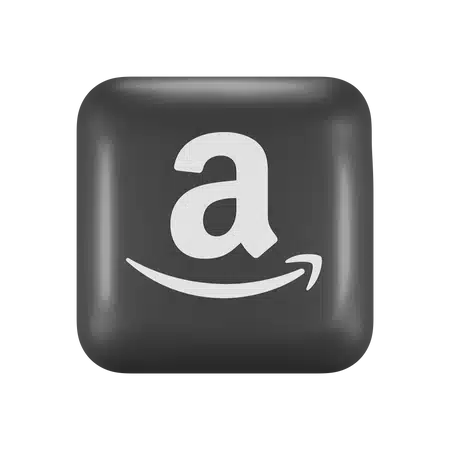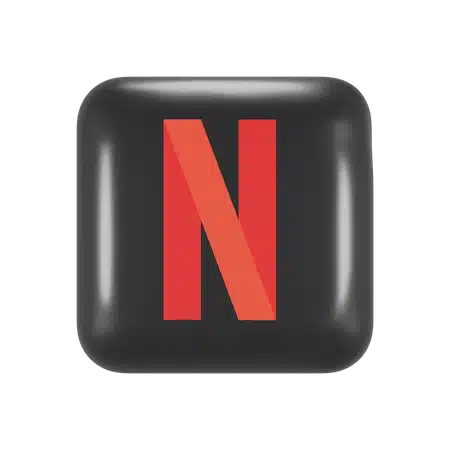In today’s digital age, web apps have become an integral part of our daily lives. From social media platforms to productivity tools, web apps offer convenience, connectivity, and functionality at our fingertips. In this article, we will explore 12 examples of web apps that you likely use on a regular basis. Let’s dive in and discover the remarkable impact of these web apps on various industries.
In today’s digital age, web apps have become an integral part of our daily lives. From social media platforms to productivity tools, web apps offer convenience, connectivity, and functionality at our fingertips. In this article, we will explore 12 examples of web apps that you likely use on a regular basis. Let’s dive in and discover the remarkable impact of these web apps on various industries.
Web Apps
1. Social Media Platforms
Social media platforms have revolutionized the way we connect, communicate, and share information. They have become an integral part of our daily lives, offering a digital space for individuals, businesses, and communities to interact and engage. Let’s explore two popular examples of social media platforms:

Facebook is the largest social media platform with billions of active users worldwide. It provides a versatile range of features, including personal profiles, news feeds, groups, events, and messaging. Users can connect with friends and family, share updates, photos, and videos, and discover content from pages and communities of interest. Facebook has become a powerful tool for personal connections, social networking, and even business promotion.

Instagram is a visual-centric social media platform focused on sharing photos and videos. It has gained immense popularity for its user-friendly interface and engaging features. Users can upload photos and videos, apply filters and editing effects, add captions and hashtags, and interact with others through likes, comments, and direct messages. Instagram’s Explore feature allows users to discover new content and connect with people who share similar interests. It has become a hub for creative expression, visual storytelling, and influencer marketing.
Both Facebook and Instagram offer immense opportunities for individuals and businesses to build an online presence, connect with their target audience, and promote their products or services. These social media platforms have transformed the way we communicate, share experiences, and consume content. They have also become powerful marketing tools, enabling businesses to reach a wider audience, engage with customers, and build brand awareness.
However, it’s important to note that while social media platforms offer numerous benefits, they also come with certain considerations. Privacy and data security are important aspects to be mindful of while using social media. It’s essential to understand and manage privacy settings, control the information shared, and be cautious of online interactions.
In conclusion, social media platforms like Facebook and Instagram have redefined how we connect and share in the digital age. They offer a rich and dynamic space for personal connections, content creation, and business growth. As you explore these platforms, remember to use them responsibly and leverage their potential to enhance your online presence and foster meaningful connections.
2. Messaging Apps
Messaging apps have revolutionized the way we communicate and stay connected with others. They provide instant and convenient ways to send messages, make voice and video calls, share media files, and even conduct group discussions. Let’s delve into two popular examples of messaging apps:

WhatsApp is a widely used messaging app that allows users to send text messages, voice messages, images, videos, and documents. It uses end-to-end encryption, ensuring secure and private communication between users. In addition to one-on-one messaging, WhatsApp also supports group chats, voice and video calls, and even features like status updates and story sharing. It has become an essential communication tool for individuals and businesses alike, offering seamless and reliable messaging services.

Slack
Slack is a messaging app designed for team communication and collaboration. It provides a centralized platform where team members can create channels for specific topics, projects, or departments. Within these channels, users can exchange messages, share files, integrate with other tools and services, and even conduct video calls. Slack streamlines communication within organizations, allowing teams to stay connected, share updates, and collaborate efficiently. It offers features like threaded conversations, searchable archives, and notifications, making it an effective tool for remote teams and businesses with multiple departments.
Both WhatsApp and Slack have transformed the way we communicate and collaborate, enabling seamless and efficient communication across different contexts. Whether it’s staying in touch with friends and family or coordinating work with colleagues, these messaging apps have become integral to our daily lives.
However, it’s important to be mindful of privacy and security while using messaging apps. Understand the app’s privacy settings, use strong passwords, and be cautious about sharing sensitive information. Additionally, it’s crucial to strike a balance between work and personal use, as excessive messaging app usage can sometimes lead to information overload or distraction.
In conclusion, messaging apps like WhatsApp and Slack have simplified and enriched our communication experiences. They offer instant and convenient ways to connect with others, share information, and collaborate effectively. Embrace the power of these messaging apps while ensuring responsible and secure usage to enhance your communication and productivity.
3. E-commerce Apps
E-commerce apps have revolutionized the way we shop and conduct online transactions. They provide a convenient and accessible platform for consumers to browse and purchase products or services, making online shopping a seamless experience. Let’s explore two notable examples of e-commerce apps:

Amazon
Amazon is a global e-commerce giant that offers a vast range of products across various categories. The Amazon app provides a user-friendly interface where customers can easily search for products, read detailed descriptions and customer reviews, and make secure purchases. The app also offers personalized recommendations based on user preferences and browsing history, enhancing the shopping experience. With features like one-click ordering, fast delivery options, and hassle-free returns, Amazon has set the standard for e-commerce convenience and reliability.
Shopify
Shopify is an e-commerce platform that enables businesses to create their own online stores and sell products or services. The Shopify app empowers entrepreneurs and small businesses by providing a comprehensive suite of tools for managing inventory, processing payments, and customizing the store’s design and functionality. It offers a seamless shopping experience for customers, with secure payment options, integrated shipping solutions, and mobile responsiveness. Shopify allows businesses to establish their online presence and scale their e-commerce operations effectively.
Both Amazon and Shopify have played a significant role in the e-commerce industry, offering innovative solutions that cater to the evolving needs of consumers and businesses. They have simplified the online shopping process, provided access to a wide range of products, and ensured secure transactions. These e-commerce apps have transformed the way we shop and have opened up new opportunities for businesses to thrive in the digital landscape.
When using e-commerce apps, it’s essential to practice safe online shopping habits. Verify the seller’s credibility, read product reviews, and be cautious about sharing personal and financial information. Additionally, ensure that the app has robust security measures in place to protect your data and transactions.
In conclusion, e-commerce apps like Amazon and Shopify have revolutionized the way we shop and conduct business online. They have made the buying and selling process more accessible, convenient, and efficient. Embrace the power of these e-commerce apps to explore a vast marketplace and unlock new opportunities for your personal or business needs.
4. Productivity Tools
Productivity tools are software applications or online services designed to enhance efficiency, organization, and collaboration in various aspects of work and personal life. They offer a wide range of features and functionalities to help individuals and teams streamline tasks, manage projects, and optimize productivity. Let’s delve into two popular examples of productivity tools:
Microsoft Office 365
Microsoft Office 365 is a comprehensive suite of productivity tools that includes familiar applications like Word, Excel, PowerPoint, Outlook, and more. These tools enable users to create and edit documents, spreadsheets, presentations, and emails, among other tasks. Office 365 offers cloud-based storage and real-time collaboration, allowing multiple users to work on the same document simultaneously. It also provides additional features like task management, note-taking, and communication tools, making it a versatile productivity solution for individuals and businesses.

Trello
Trello is a web-based project management tool that utilizes boards, lists, and cards to help users organize and prioritize tasks. It follows the Kanban method, which visualizes workflows and allows users to move tasks across different stages. With Trello, individuals and teams can create boards for projects, add tasks as cards, assign due dates, add labels and comments, and track progress. It offers a user-friendly interface, integrations with other productivity tools, and collaborative features that promote effective project management and task delegation.
Both Microsoft Office 365 and Trello are powerful productivity tools that cater to different needs and preferences. Office 365 provides a comprehensive suite of applications for document creation, communication, and collaboration, while Trello focuses on project management and task organization. These tools empower individuals and teams to work efficiently, stay organized, and boost productivity in their respective domains.
When using productivity tools, it’s important to understand their features and functionalities and explore ways to integrate them into your existing workflows. Experiment with different tools, customize settings according to your preferences, and leverage their capabilities to streamline tasks and optimize productivity. Remember to regularly update and backup your data to ensure seamless usage and safeguard against any potential data loss.
In conclusion, productivity tools like Microsoft Office 365 and Trello offer valuable resources to enhance efficiency and organization in work and personal life. By leveraging these tools’ capabilities, individuals and teams can streamline tasks, collaborate effectively, and stay on top of their responsibilities. Embrace the power of productivity tools to unlock your full potential and achieve greater success in your endeavors.
5. Financial Apps
Financial apps are software applications designed to assist individuals and businesses in managing their financial activities, such as budgeting, expense tracking, investment management, and financial planning. These apps provide users with convenient tools and features to monitor their finances, make informed decisions, and achieve their financial goals. Let’s explore two examples of financial apps:
Mint
Mint is a popular personal finance app that helps individuals track and manage their expenses, budget their money, and stay on top of their financial health. It allows users to connect their bank accounts, credit cards, and other financial accounts to automatically track their transactions and categorize their expenses. Mint provides personalized budgeting tools, financial goal setting, and alerts for bill payments and upcoming due dates. It also offers credit score monitoring and recommendations for saving money and reducing debt. With its user-friendly interface and comprehensive features, Mint simplifies financial management and empowers users to make informed financial decisions.
QuickBooks
QuickBooks is a widely used accounting software that caters to small businesses and self-employed individuals. It offers a range of financial management tools, including invoicing, expense tracking, income tracking, financial reporting, and tax preparation. QuickBooks allows users to manage their business finances in a centralized platform, automate repetitive tasks, and generate professional invoices and financial statements. It also integrates with banking institutions, enabling easy synchronization of transactions. With its robust features and scalability, QuickBooks streamlines financial processes and facilitates accurate record-keeping for businesses of all sizes.
Both Mint and QuickBooks provide valuable resources for individuals and businesses to effectively manage their finances. Mint focuses on personal finance management, helping individuals track expenses, set budgets, and achieve financial goals. On the other hand, QuickBooks caters to the accounting and financial needs of small businesses, offering comprehensive tools for bookkeeping, invoicing, and financial reporting. By utilizing these financial apps, users can gain better control over their finances, make informed decisions, and work towards their financial objectives.
When using financial apps, it’s essential to prioritize data security and privacy. Ensure that you choose reputable apps from trusted sources and follow best practices for securing your financial information. Regularly review your transactions, reconcile accounts, and monitor your financial health using the insights provided by these apps. By leveraging the capabilities of financial apps like Mint and QuickBooks, you can simplify your financial management, improve your financial well-being, and make progress towards your financial goals.
In summary, financial apps play a crucial role in empowering individuals and businesses to effectively manage their finances. Whether it’s personal finance management or business accounting, apps like Mint and QuickBooks offer intuitive tools and features to streamline financial activities, monitor expenses, and achieve financial objectives. Embrace the power of financial apps to gain control over your finances, make informed decisions, and pave the way towards financial success.
6. Entertainment Apps:
Entertainment apps have revolutionized the way we consume and enjoy various forms of entertainment, from movies and music to games and live streaming. These apps provide users with access to a wide range of content and interactive experiences, making entertainment more accessible, personalized, and immersive. Let’s explore two examples of entertainment apps:

Netflix
Netflix is a leading streaming platform that offers a vast library of movies, TV shows, documentaries, and original content. With a subscription-based model, users can access a wide range of content from various genres and languages. Netflix provides personalized recommendations based on users’ viewing history and preferences, enhancing the overall entertainment experience. The app allows users to stream content on multiple devices, download shows and movies for offline viewing, and create individual profiles for personalized recommendations. With its user-friendly interface and extensive content catalog, Netflix has revolutionized the way we consume entertainment by bringing a diverse selection of movies and shows to our fingertips.

Spotify
Spotify is a popular music streaming app that gives users access to millions of songs from various artists and genres. Users can create personalized playlists, follow their favorite artists, discover new music through curated playlists and recommendations, and even listen to podcasts. Spotify offers both free and premium subscription options, allowing users to enjoy uninterrupted music streaming, ad-free listening, and offline playback. The app provides a seamless and intuitive user experience, making it easy to explore, discover, and enjoy music on the go. With its vast music library and social sharing features, Spotify has transformed the way we listen to and discover music.
Both Netflix and Spotify exemplify the power of entertainment apps in delivering immersive and personalized entertainment experiences. Netflix brings a vast collection of movies and TV shows to users’ screens, offering on-demand streaming and personalized recommendations. On the other hand, Spotify caters to music lovers, providing a rich music library, curated playlists, and personalized recommendations based on users’ music preferences. By leveraging these entertainment apps, users can access their favorite content anytime, anywhere, and enjoy a customized entertainment experience.
When using entertainment apps, it’s important to consider factors such as subscription costs, content availability, and device compatibility. Evaluate the features and benefits offered by different apps to find the ones that align with your entertainment preferences. Stay informed about new releases, explore different genres, and discover content that resonates with your interests. With entertainment apps like Netflix and Spotify, you can dive into a world of entertainment, discover new favorites, and enhance your overall entertainment experience.
In summary, entertainment apps have transformed the way we consume and enjoy entertainment. Apps like Netflix and Spotify have revolutionized the streaming of movies, TV shows, and music, providing users with a vast library of content and personalized recommendations. Embrace the power of entertainment apps to access your favorite movies, shows, and songs, and immerse yourself in a world of entertainment. Whether it’s binge-watching your favorite TV series or discovering new music, entertainment apps offer endless possibilities for entertainment and enjoyment.
7. Educational Apps:
Educational apps have become invaluable tools for learning and skill development, providing users with access to a wide range of educational resources, interactive lessons, and study materials. These apps leverage technology to make learning more engaging, accessible, and personalized. Let’s explore two examples of educational apps:
Duolingo
Duolingo is a popular language learning app that offers interactive lessons for a variety of languages. The app uses gamification techniques to make learning fun and engaging. Users can practice listening, speaking, reading, and writing skills through exercises, quizzes, and challenges. Duolingo provides a structured learning path with lessons that gradually increase in complexity, allowing users to progress at their own pace. The app also offers features like streaks, achievements, and leaderboards to motivate and track users’ progress. With its user-friendly interface and bite-sized lessons, Duolingo has made language learning accessible to millions of users worldwide.
Khan Academy
Khan Academy is an educational app that provides video lessons, practice exercises, and quizzes across a wide range of subjects, including math, science, humanities, and more. The app offers comprehensive, in-depth content that covers various educational levels, from elementary school to college-level courses. Khan Academy allows users to learn at their own pace and provides personalized recommendations based on their learning progress. The app also offers features like progress tracking, badges, and achievements to encourage continuous learning. With its extensive library of educational resources and interactive learning tools, Khan Academy has become a go-to platform for self-paced learning and academic support.
Both Duolingo and Khan Academy exemplify the power of educational apps in facilitating learning and skill development. Duolingo focuses on language learning, offering an interactive and gamified approach to language acquisition. On the other hand, Khan Academy covers a wide range of subjects and provides comprehensive educational resources for self-paced learning. By leveraging these educational apps, users can expand their knowledge, acquire new skills, and enhance their learning journey.
When using educational apps, it’s important to set learning goals, establish a regular study routine, and leverage the app’s features to track progress and stay motivated. Take advantage of interactive exercises, practice quizzes, and feedback mechanisms offered by the app to reinforce learning. Explore different subjects, engage in hands-on activities, and seek additional resources when needed. With educational apps like Duolingo and Khan Academy, learning becomes accessible, engaging, and tailored to individual needs.
In summary, educational apps have revolutionized the way we learn, making education accessible to anyone with a smartphone or tablet. Apps like Duolingo and Khan Academy provide interactive lessons, practice exercises, and personalized learning paths to enhance knowledge acquisition and skill development. Embrace the power of educational apps to embark on a journey of continuous learning, acquire new skills, and expand your knowledge base. Whether it’s mastering a new language or exploring various subjects, educational apps offer a wealth of resources to facilitate your learning journey.
Choose HopeLeaf Technologies as your trusted partner for WordPress website development, and unlock the full potential of this powerful platform for your business. Contact us today to get started on creating a remarkable online presence with WordPress.





